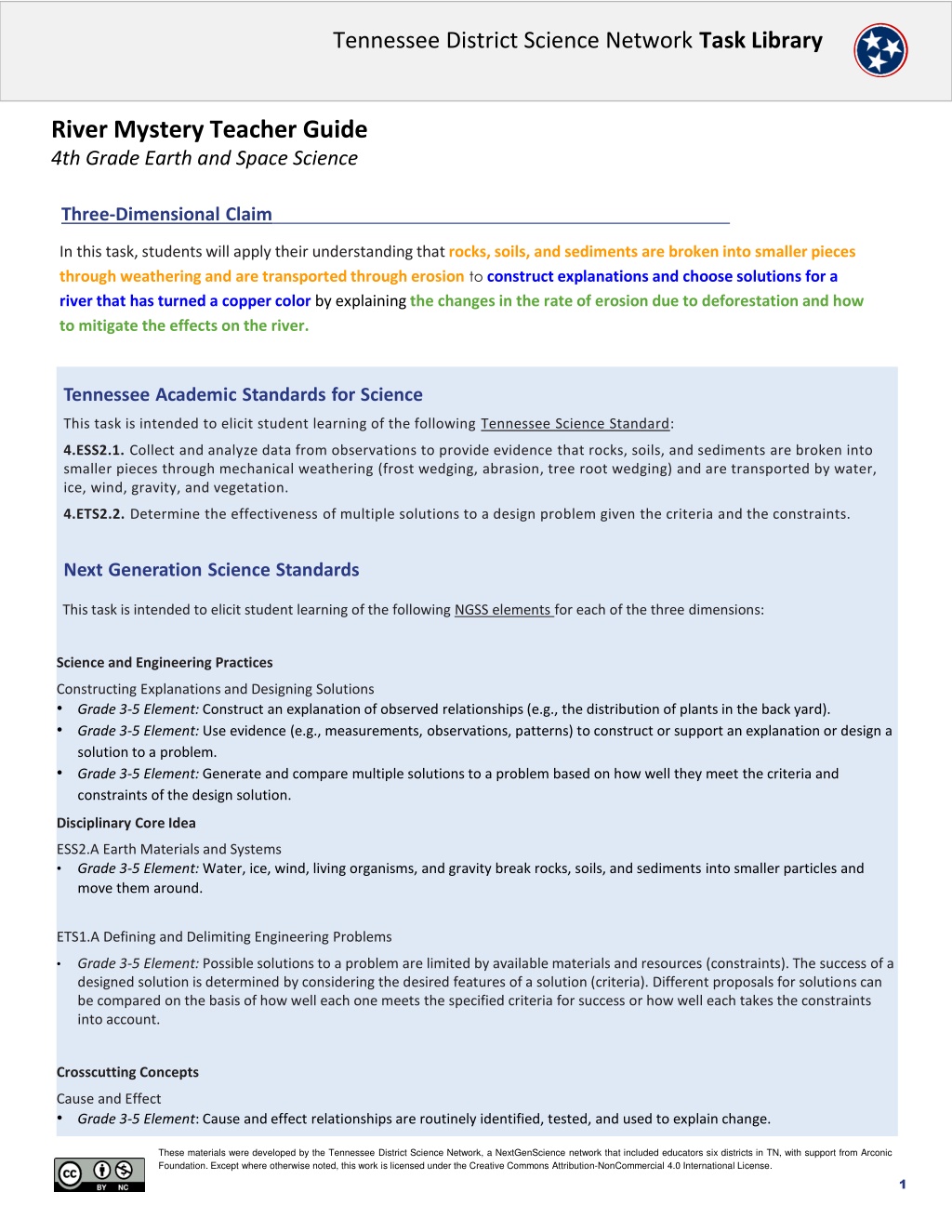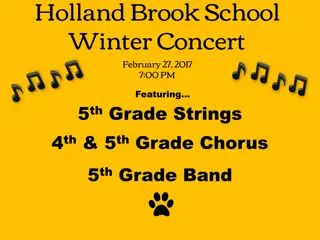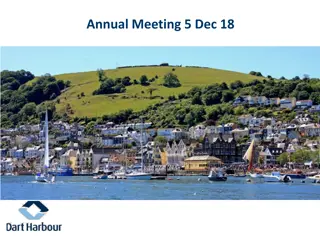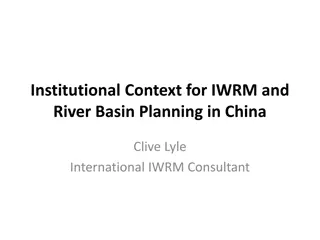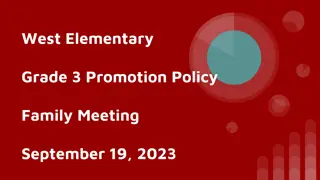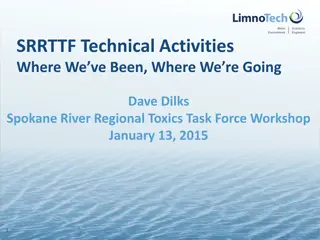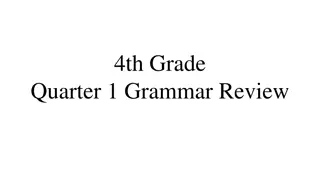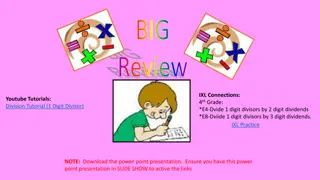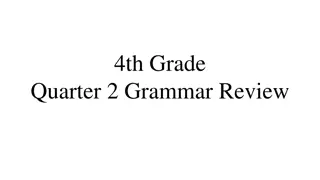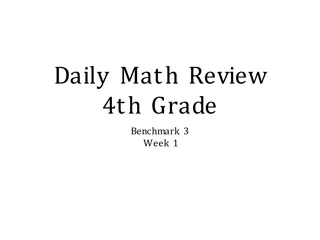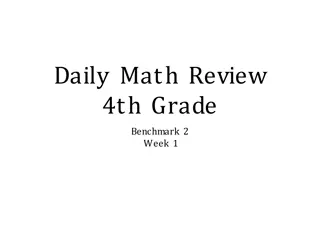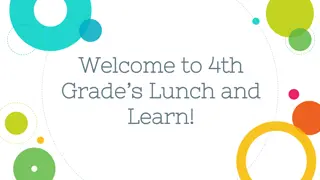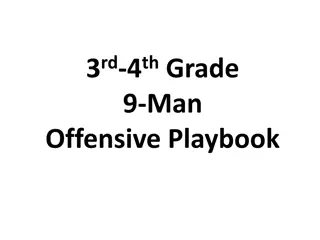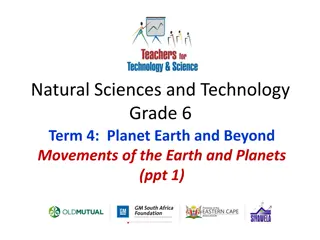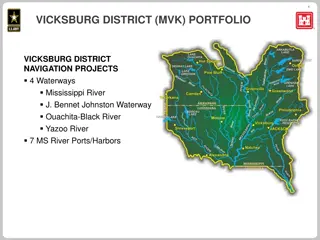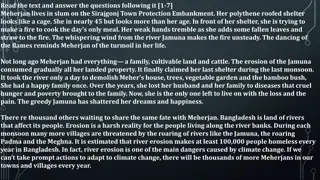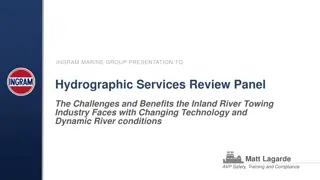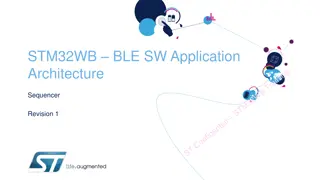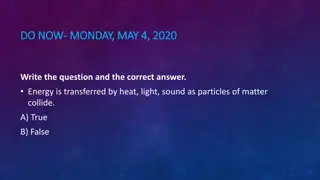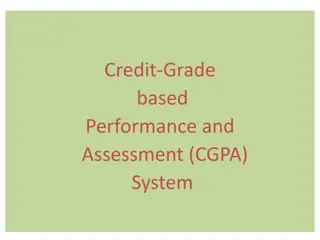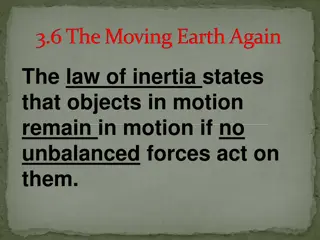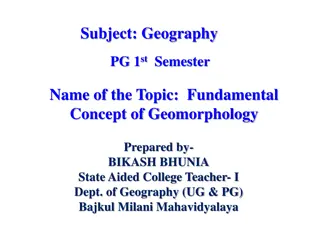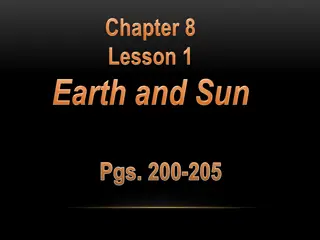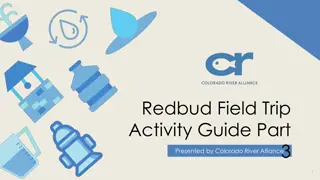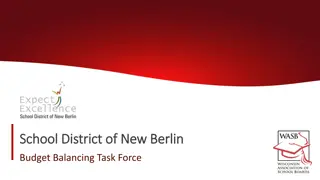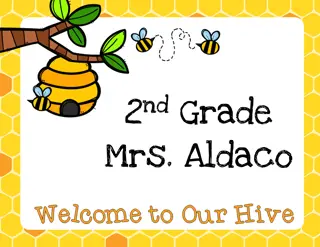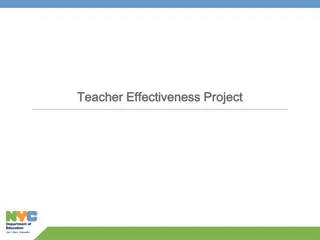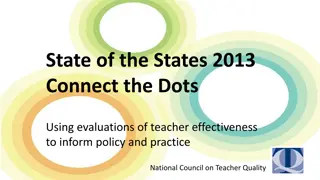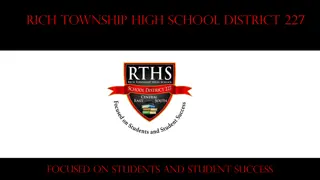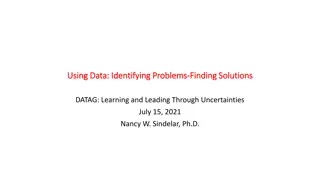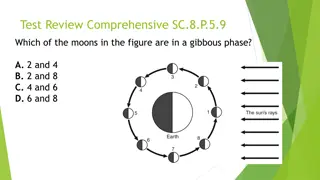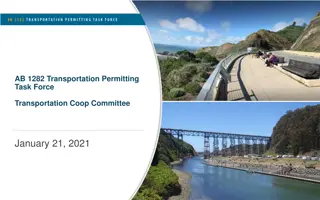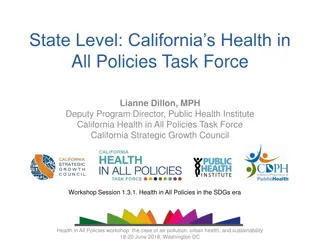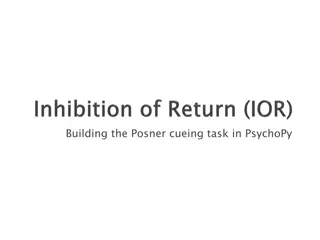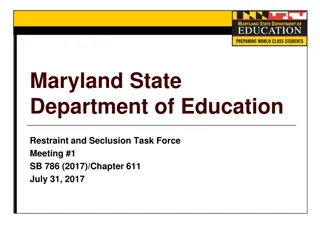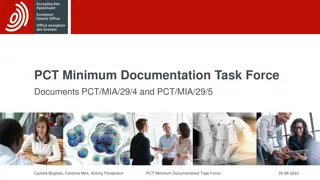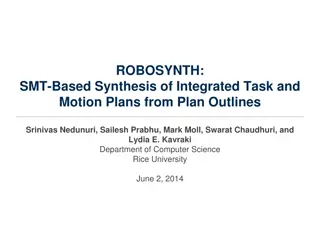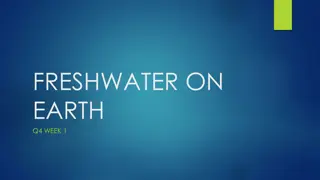River Mystery Teacher Guide for 4th Grade Earth Science Task
Students will analyze the impact of deforestation on a river turning copper-colored due to changes in erosion rates. They will apply knowledge of rocks, soils, and sediments in constructing explanations and solutions. This task aligns with Tennessee Academic Standards for Science and Next Generation Science Standards for Earth Science and Engineering Practices. Suggestions for implementation and assumptions about student prerequisites are provided in the guide.
Download Presentation

Please find below an Image/Link to download the presentation.
The content on the website is provided AS IS for your information and personal use only. It may not be sold, licensed, or shared on other websites without obtaining consent from the author. Download presentation by click this link. If you encounter any issues during the download, it is possible that the publisher has removed the file from their server.
E N D
Presentation Transcript
Tennessee District Science Network Task Library River Mystery Teacher Guide 4th Grade Earth and Space Science Three-Dimensional Claim In this task, students will apply their understanding thatrocks, soils, and sediments are broken into smaller pieces through weathering and are transported through erosion to construct explanations and choose solutions for a river that has turned a copper color by explaining the changes in the rate of erosion due to deforestation and how to mitigate the effects on the river. Tennessee Academic Standards for Science This task is intended to elicit student learning of the following Tennessee Science Standard: 4.ESS2.1. Collect and analyze data from observations to provide evidence that rocks, soils, and sediments are broken into smaller pieces through mechanical weathering (frost wedging, abrasion, tree root wedging) and are transported by water, ice, wind, gravity, and vegetation. 4.ETS2.2. Determine the effectiveness of multiple solutions to a design problem given the criteria and the constraints. Next Generation Science Standards This task is intended to elicit student learning of the following NGSS elements for each of the three dimensions: Science and Engineering Practices Constructing Explanations and Designing Solutions Grade 3-5 Element: Construct an explanation of observed relationships (e.g., the distribution of plants in the back yard). Grade 3-5 Element: Use evidence (e.g., measurements, observations, patterns) to construct or support an explanation or design a solution to a problem. Grade 3-5 Element: Generate and compare multiple solutions to a problem based on how well they meet the criteria and constraints of the design solution. Disciplinary Core Idea ESS2.A Earth Materials and Systems Grade 3-5 Element: Water, ice, wind, living organisms, and gravity break rocks, soils, and sediments into smaller particles and move them around. ETS1.A Defining and Delimiting Engineering Problems Grade 3-5 Element: Possible solutions to a problem are limited by available materials and resources (constraints). The success of a designed solution is determined by considering the desired features of a solution (criteria). Different proposals for solutions can be compared on the basis of how well each one meets the specified criteria for success or how well each takes the constraints into account. Crosscutting Concepts Cause and Effect Grade 3-5 Element: Cause and effect relationships are routinely identified, tested, and used to explain change. These materials were developed by the Tennessee District Science Network, a NextGenScience network that included educators six districts in TN, with support from Arconic Foundation. Except where otherwise noted, this work is licensed under the Creative Commons Attribution-NonCommercial 4.0 International License. 1
Tennessee District Science Network Task Library River Mystery Teacher Guide 4th Grade Earth and Space Science Suggestions for Use In this task students are presented with the mystery phenomenon of The Bloody River in the Tennessee Desert and given clues to explain why the river appears to be an orangey, red color. Students will use their knowledge of weathering, erosion, and deposition to explain how small copper pieces can be found naturally in a river and then compare this to a river polluted with copper when the natural process of erosion is changed. Next, students will choose between two clean-up plans based on the criteria that weathering and erosion must be reduced. There is an optional prompt that asks students to decide if this scenario is an example of humans negatively or positively impacting land and water. It is suggested to use color copies of the student task if possible. If this is not possible, then project the student task onto the board so that students can visualize the images in each prompt. Additionally, it may be helpful to show students detailed images of copper ore so that students understand copper pieces are embedded within rock. This visual may help students better utilize their understanding of the role weathering in prompt B. Assumptions Students should have had opportunities to master the following DCI information in the standards: Students should be able to separate the processes of weathering and erosion and their roles in changing the surface of Earth. Weathering processes pertain to the breaking down of materials and may include but are not limited to processes such as frost wedging, abrasion, and tree root wedging. Erosive processes transport these broken-down materials such as water, ice, wind, gravity, and vegetation. Deposition is the process in which sediments, soils, and rocks are deposited, building up layers of sediment as a new landform. Processes of weathering and erosion can occur over very long periods of time. However, gradual processes occurring continuously have also played a significant role in creating Earth s current landscape. Students should understand the processes used to obtain materials from the environment have consequences Students should examine the activities that humans undertake and their effects. Discussions can include, but are not limited to farming, mining, and building. Students should have had opportunities to evaluate the effectiveness of various solutions, placing emphasis on incorporating the constraints into the critique of solutions that meet the proposed criteria for success. Reference: TN Science Standards Reference Guide https://www.tn.gov/content/dam/tn/education/standards/sci/sci_standards_reference.pdf Logistics This task may take ~60 minutes and need to be broken into parts over several class periods. 2
Tennessee District Science Network Task Library River Mystery Teacher Guide 4th Grade Earth and Space Science Prompt A is meant not to be assessed. The prompt can be done as a whole class discussion or have students complete and then discuss as a class. 3
Tennessee District Science Network Task Library River Mystery Teacher Guide 4th Grade Earth and Space Science Prompt B: Explain how these pieces broke away from the ore embedded in the mountain and how the copper pieces ended up in the river. Prompt B assesses: TN Standard & DCI 4.ESS2: Provide evidence that rocks, soils, and sediments are broken into smaller pieces through mechanical weathering (frost wedging, abrasion, tree root wedging) and are transported by water, ice, wind, gravity, and vegetation. (TN) ESS2.A: Water, ice, wind, living organisms, and gravity break rocks, soils, and sediments into smaller particles and move them around. (NGSS) SEP N/A CCC Cause and effect: Cause and effect relationships are routinely identified, tested, and used to explain change. Prompt B Scoring Guidance Score Components of Student Response (SEP, CCC, and/or DCI) +1 Students show DCI understanding that rock is broken into smaller pieces. Students do not need to use the term weathering. Students may guess as to the mechanism of weathering such as water, root wedging, etc. +1 Students show DCI understanding that rock is transported to the river below. Students do not need to use the term erosion. Students may guess as to the mechanism of erosion such as rainwater or wind. Complete Student Example Response The copper ore is broken into smaller pieces over time and is moved down the mountain by erosion. The small pieces of copper ore are bounced down a river where it smoothed into the small pieces of copper that there found. 4
Tennessee District Science Network Task Library River Mystery Teacher Guide 4th Grade Earth and Space Science Prompt C1. Explain what changed before and after the mining operation. Prompt C2. Why did this change cause pollution in the Ocoee River? Prompt C assesses: TN Standard & DCI 4.ESS2: Provide evidence that rocks, soils, and sediments are broken into smaller pieces through mechanical weathering (frost wedging, abrasion, tree root wedging) and are transported by water, ice, wind, gravity, and vegetation. (TN) ESS2.A: Water, ice, wind, living organisms, and gravity break rocks, soils, and sediments into smaller particles and move them around. (NGSS) SEP N/A CCC Cause and effect: Cause and effect relationships are routinely identified, tested, and used to explain change. Prompt C Scoring Guidance Score Components of Student Response (SEP, CCC, and/or DCI) +1 Answer C1: Student recognizes that a reduction in trees effects the resulting erosion (e.g., Students may write about the exposed soil or lack of trees as they think about the CCC impacting erosion). +1 Student should have something about the rate at which the erosion is happening (e.g., Student may write about the erosion is happening faster and causing the river to be polluted) +1 Students will apply the CCC to explain that a reduction in trees effects the resulting erosion (e.g., Students may use words such as faster, more, slower, or less to described the change in rate of erosion.) 5
Tennessee District Science Network Task Library River Mystery Teacher Guide 4th Grade Earth and Space Science D1. Describe how each plan would work to control erosion and help the copper polluted Ocoee River. Prompt D Assesses TN Standard & DCI 4.ESS2: Provide evidence that rocks, soils, and sediments are broken into smaller pieces through mechanical weathering (frost wedging, abrasion, tree root wedging) and are transported by water, ice, wind, gravity, and vegetation. (TN) ESS2.A: Water, ice, wind, living organisms, and gravity break rocks, soils, and sediments into smaller particles and move them around. (NGSS) SEP Construct an explanation: Use evidence (e.g., measurements, observations, patterns) to construct or support an explanation or design a solution to a problem. CCC N/A Prompt D Scoring Guidance Score Components of Student Response (SEP, CCC, and/or DCI) +1 Student should give pros/cons of Plan A (e.g., Pros: mats help grass seed stay in place/ drains help with not harming animals; Cons: mats could harm wildlife/ drains can get clogged Student should provide pros/cons of Plan B (e.g., Pros: mineral spray help with soil; Cons: chemicals harm animals/ takes many years for trees and plants to grow) +1 Student uses evidence to justify their description of how each plan would work. 6
Tennessee District Science Network Task Library River Mystery Teacher Guide 4th Grade Earth and Space Science D2. Which solution would you select and describe why the plan you selected is a better solution? Prompt D Assesses TN Standard 4.ETS2.2. Determine the effectiveness of multiple solutions to a design problem given the criteria and the constraints. SEP Construct an explanation: Generate and compare multiple solutions to a problem based on how well they meet the criteria and constraints of the design solution. (NGSS) CCC Cause and effect: Cause and effect relationships are routinely identified, tested, and used to explain change. (NGSS) Prompt D Scoring Guidance Score Components of Student Response (SEP, CCC, and/or DCI) +1 Students look at pros/cons of Plan A & B and select one based given the criteria and constraints +1 Students share their claim, evidence, and reasoning to justify their selection. +1 Students use cause/effect to explain why their chosen plan would work. These materials were developed by the Tennessee District Science Network, a NextGenScience network that included educators six districts in TN, with support from Arconic Foundation. Except where otherwise noted, this work is licensed under the Creative Commons Attribution-NonCommercial 4.0 International License. 7
